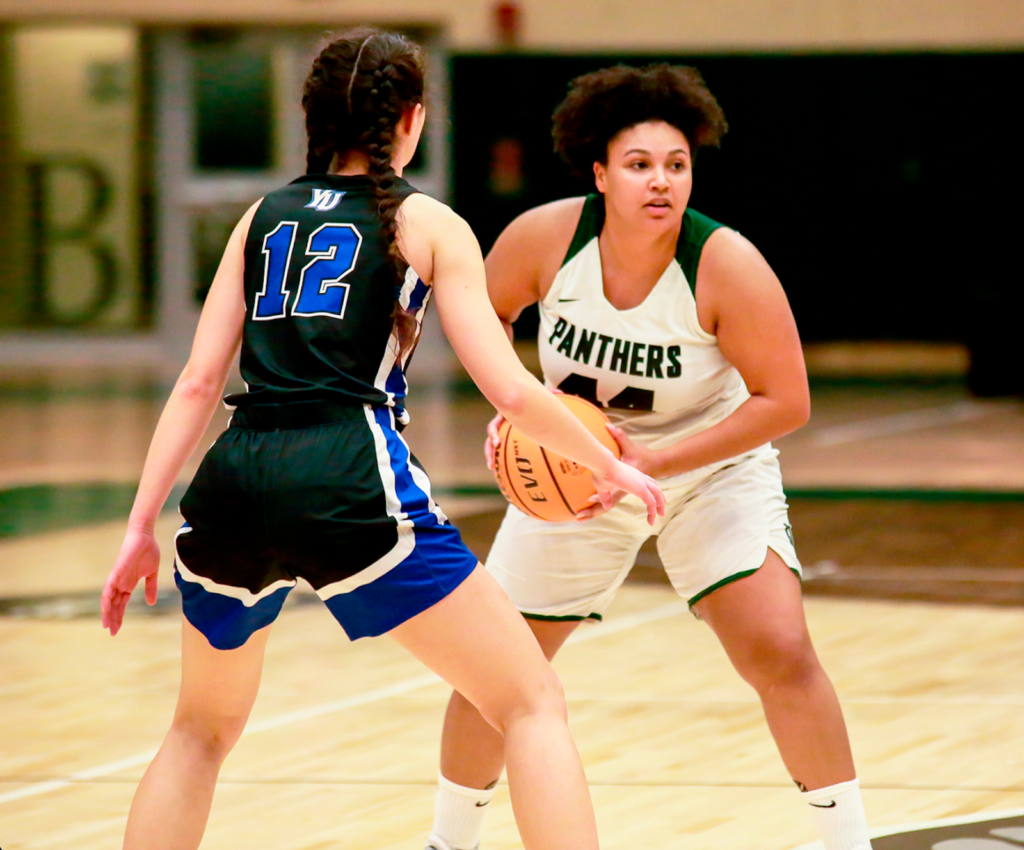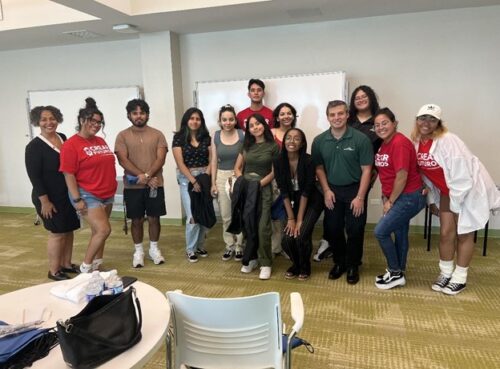
The SUNY Old Westbury men’s and women’s basketball teams lost their home-court advantage due to relocating to off-campus facilities for the 2022-2023 season for COVID-19-related reasons.
New York State removed the teams from their home court due to the conversion of Old Westbury’s gym and fields to mass vaccination sites and alternate care facilities during the COVID-19 pandemic. This past season, both Panther basketball teams practiced at the Island Garden Arena in West Hempstead and the Long Island Sports Hub in Syosset instead of their home court at the Clark Athletic Center on the SUNY Old Westbury campus. The men’s 24-game season and the women’s 23-game season home games were played at Farmingdale State College’s sports facility. “We were glad that we were able to be this resource,” said Lenore Walsh, SUNY Old Westbury’s Athletic Director. “But at the same time it was at the expense of the athletic facilities.”
The teams’ good intentions of relocating for the public good resulted in a losing record, which hadn’t happened in nearly two decades. The men’s head Basketball Coach, Bernard Tomlin, tried to grasp the difficult experience his team endured. “For 21 years, we made the playoffs every year,” he said. “And then all of a sudden, we have these two years we didn’t.” This season, the men’s team had three wins and 21 losses, and the women’s team had two wins and 21 losses, according to the Old Westbury Panthers website. Walsh believes that the loss of “home-court advantage” affected the teams’ performances. “I definitely think it influenced our final records because of the fact that we were practicing in so many different gyms,” she said. “It’s just not the same feeling.”
Walsh also suggested that the lack of a true home-court stripped the teams of their advantage of having their fanbase. Samford University Center for Sports Analytics studied the effects of home-court advantage. In the 2020-2021 NCAA Division I Men’s Basketball season, referees called fewer fouls on average on visiting teams compared to the previous three seasons, the study found. During that same season, the number of fouls referees called on the home teams remained consistent with the previous three seasons, according to the study. Due to the decreased crowd attendance across the NCAA during the beginning of the COVID-19 pandemic, the home-crowd psychological influence on referees and player morale was lost. As the number of fans diminished, referees made fewer calls against the visiting teams, putting them at an advantage. The home crowd can play a factor on referees’ calls, according to Tomlin, “especially in close games where the home base is going to put some pressure on the officials when they feel like they’re being shortchanged.”
The Samford study also found that in the 2020-2021 season, out of 31 conferences, 27 noticed the decrease in fouls called on visiting teams, and 17 of these conferences were statistically significant. Additionally, home-court winning percentage reduced by about five percent. “I really miss how our home games would be packed with fans,” said SUNY Old Westbury’s women’s basketball player, Melinda Harris. “They motivated and supported us throughout the season.”
According to Harris, “other schools would be afraid to play at our school just because of the atmosphere the crowd created.” When the SUNY Old Westbury basketball teams played at Farmingdale State College, they lost their raving, excited fanbase. Tomlin said, “There is some psychological pressure on officials when the home crowd is involved in the game and pretty much letting them know that they’re not excited about their work,” he said. Tomlin added that Old Westbury basketball is one of the prides of the college. Typically, he said, “the whole idea behind sports is to get [the] community involved with the representation of the team.”
Women’s Head Basketball Coach, Bryant Lassiter, noticed that the parents of the players showed up, but the crowd was still small. “We never really got that full student support because [the] games were at Farmingdale,” he said. If fans wanted to attend games, they had to find their own modes of transportation. Walsh said she tried to work with the facilities and the Student Government Association to provide shuttle transportation, but the logistics simply didn’t work out.
The lack of fans also had an impact on player morale among the men’s and women’s teams. As a senior, Harris was frustrated to play her last year without much student support. She said the relocation “made it hard for [the team] to gain support from fans.” Her coach, Lassiter, also missed the sense of community that would encourage his team, as they lost the comfort of their own gym and familiar crowd.
The fields and gym are still in the hands of the state as renovations and repairs are not yet completed. In the gym, some of the work includes pulling up the temporary linoleum floors, repainting, and oiling the basketball hoops. SUNY Old Westbury anticipates having the fields and gym turned back over to them on August 15, 2023.
The coaches, players, and staff are anxiously awaiting their return to their home court next season with their excited fanbase. “I think all of our [future] home games are going… to have that championship feel just because we want to bring the Panther pride spirit back,” Walsh said. “I know the student athletes want it. They want to hear that roar in the gym of the fans.”







